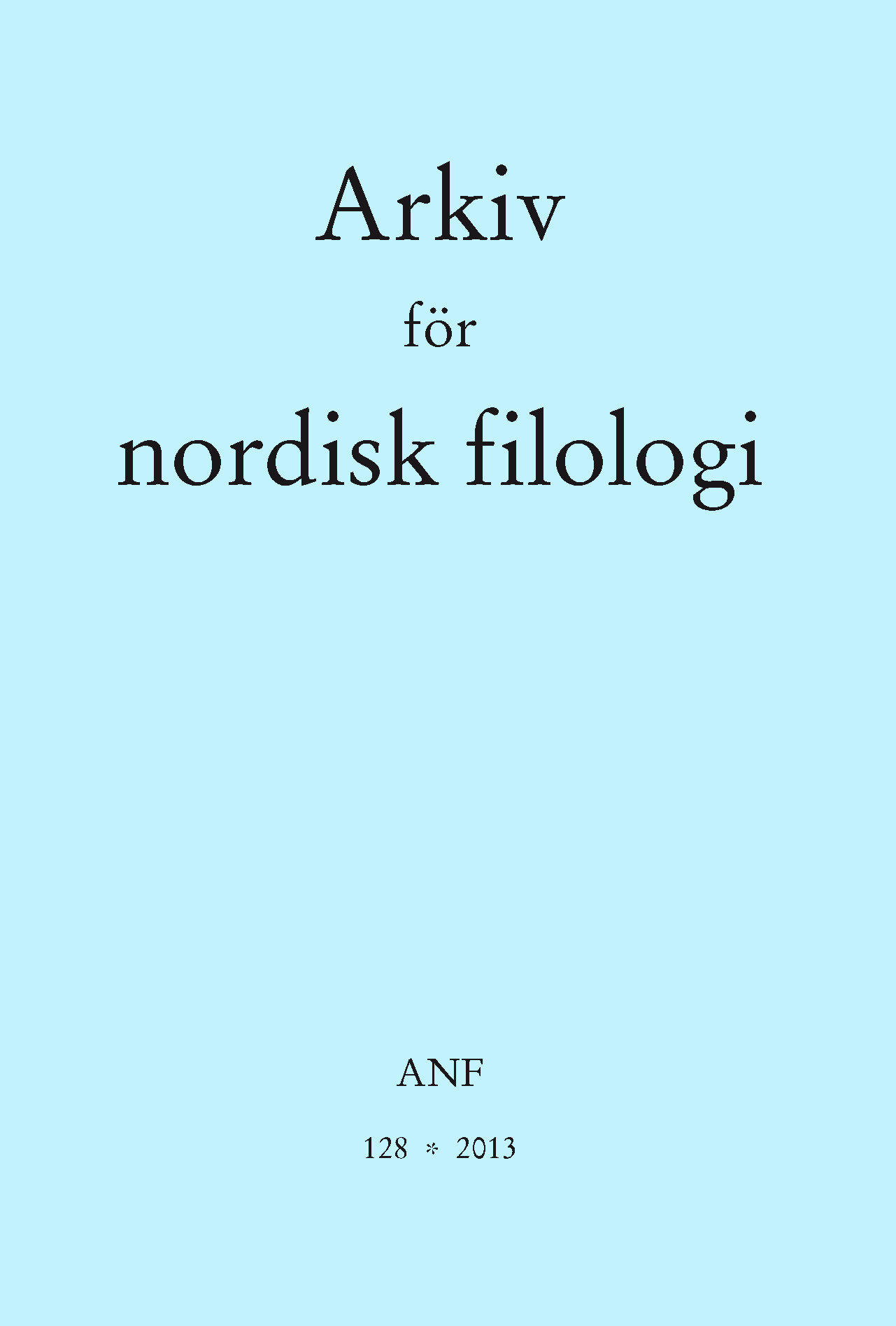Tonelagsvariasjon i norsk uttale av suffikset -asje av fr. -age
Abstract
This article presents an empirical description of the use of the N orwegian tonal accents 1 and 2 respectively in the pronunciation of the noun-derivational suffix <-asje> as it appears in loan-words from French <-age> (from LL <-aticum>), directly or via Dutch, English or German. Historically, tonal accent 1 has been general in N orwegian usage, but during the later decades an inter- as well as intraindividual variation has been noticeable. The author has elicited that variation from television programmes from the N orwegian Broadcasting Corporation (NRK = N orsk rikskringkasting), which are available for scrutiny in the company archives. His study shows a distribution of the two tonal accents in which the innovative tonal accent 2 is used predominantly by younger people and more often by women than men. I n a concluding discussion, the author compares his findings with a proposed rule that takes tonal accent 2 in noun-derivational suffixes in lent verbs to be a sign of true norwegianization and the same tonal accent to be the unmarked one in Norwegian. He finds that rule problematic, as the most frequent of the nouns in question show no inclination towards the use of tonal accent 2 in general-language practice. Finally, the article evaluates the connotational preconditions in the present tonal accent variation for the future progress of tonal accent 2 usage.


